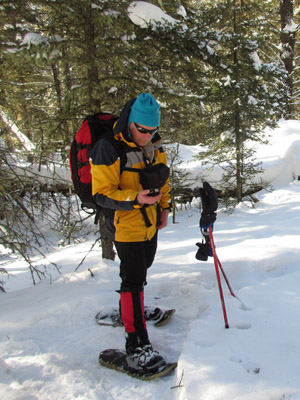
GPS Tutorial
 I have talked to lots of people who have purchased GPS units, but have not really used them when they are hiking or skiing. I have also given several GPS classes over the years, and in both these situations, one of the most frequent comments I get is something to the effect that the individual does not have a clear idea of why they would want to use a GPS in the field. To me, this has always been pretty self-evident. But clearly, I am in the minority.
I have talked to lots of people who have purchased GPS units, but have not really used them when they are hiking or skiing. I have also given several GPS classes over the years, and in both these situations, one of the most frequent comments I get is something to the effect that the individual does not have a clear idea of why they would want to use a GPS in the field. To me, this has always been pretty self-evident. But clearly, I am in the minority.
So in my latest GPS classes, I have tried to better address a) why you might want to use a GPS unit in the field and b) how GPS units work, so that folks can understand the limitations of these units. The typical class I teach is a full day course, half lecture and a Q&A session, and a half day in the field. I have found that it is always good to give a few examples in the field, right after folks have been through the why and how lecture. But since this is a virtual world these days, there may be people reading this in Seattle, Santiago, or Sicily. And it is impractical to be in the field with me.
So for those of you who can’t attend one of my GPS classes, here is the Powerpoint part of my lecture. It is a “Powerpoint Show” (ie, xxx.pps) so you will need either Powerpoint on your computer or Microsoft’s free Powerpoint viewer to watch the lecture. Just click on the Page Down key to go to the next slide or animation.
And just a note: virtually every smart phone these days has a built-in global positioning chip (how else can Google tell you where the nearest pizza restaurant is?) and there are a variety of GPS compatible mapping apps. I use Backcountry Navigator for Android occasionally, but I prefer using a dedicated hand-held GPS unit, with topographic maps. The unit has a smaller footprint (albeit a much smaller screen) and has a dedicated interface, which is really nice. Also, there is no need to deal with the proprietary formats of the smart phone apps.
© Roger A. Jenkins, 2015